Trending News
17 October, 2024
14.18°C New York

Apple will unveil its iPhone 16 lineup on September 9, as the company has started sending out press invites on Monday for the upcoming event. The official announcement comes as previous reports had claimed that the event would take place on September 10.
Apple is using the tagline “It’s Glowtime” for the event, which will take place at the Steve Jobs Theater at Apple Park at 10 a.m. PT/ 1 p.m. ET.
As always, rumors about what the event will include have surfaced over the past few weeks and months. For instance, reports have suggested that the iPhone 16 lineup will include larger screens on the Pro models and a new button dedicated to taking pictures. The idea behind the feature is to make it easier to capture content in landscape mode. All of the iPhone 16 models are expected to launch with the Action Button, which was previously only available on the iPhone 15 Pro line.
Plus, it’s possible that the event could include the unveiling of the Apple Watch Series 10, which is said to have a bigger screen and new chip to make the device more powerful. We may also see two versions of new AirPods.
The phones are also expected to support Apple’s suite of AI features, dubbed Apple Intelligence, which were announced earlier this year.
In addition, it’s likely that Apple will make iOS 18, iPadOS 18, macOS Sequoia, watchOS 11 and its other major operating system updates go live soon after the event.

Looking to make a splash at TechCrunch Early Stage 2024? Our Side Events initiative is a fantastic opportunity to engage with Boston’s tech community in a dynamic and memorable manner. Plus, we’ll assist in promoting your event at no cost to you! Submit your event here by March 20.
What exactly are Side Events? Side Events give you a chance to grow your brand and network with 1,500 conference attendees and the local Boston tech community by hosting your own event as part of “Early Stage Week” from April 21–April 27. Whether it’s a mixer, a career showcase, or a thought-provoking panel, the choice is yours. There’s no application fee, so why not apply now?
Applications are currently open until March 20 at 11:59 p.m. PT. We’ll be reviewing and approving applications on a rolling basis, so submit your event for consideration today! The sooner you’re approved, the sooner we can kickstart promotion for your event.
Approved Side Events will benefit from complimentary promotion across TechCrunch.com and the Early Stage 2024 website, and will also be highlighted to Early Stage 2024 attendees through diverse channels like emails, posts, and the agenda.
There’s no cost to apply and no participation fee. However, hosts are responsible for all aspects of their event, including expenses, promotions, and operations. For detailed guidance, planning tips, and the nitty-gritty details, refer to our Side Events Guide.
Embrace the opportunity to host at TechCrunch Early Stage 2024 and prepare to elevate your brand, expand your network, and forge meaningful connections within the tech community. Apply to host a Side Event and let’s kick off the festivities!
Don’t miss out on the Side Events, alongside the phenomenal Early Stage programming. Why wait? Secure your pass now and enjoy savings of up to $200.
Is your company interested in sponsoring or exhibiting at TechCrunch Early Stage 2024? Reach out to our sponsorship sales team by completing this form.
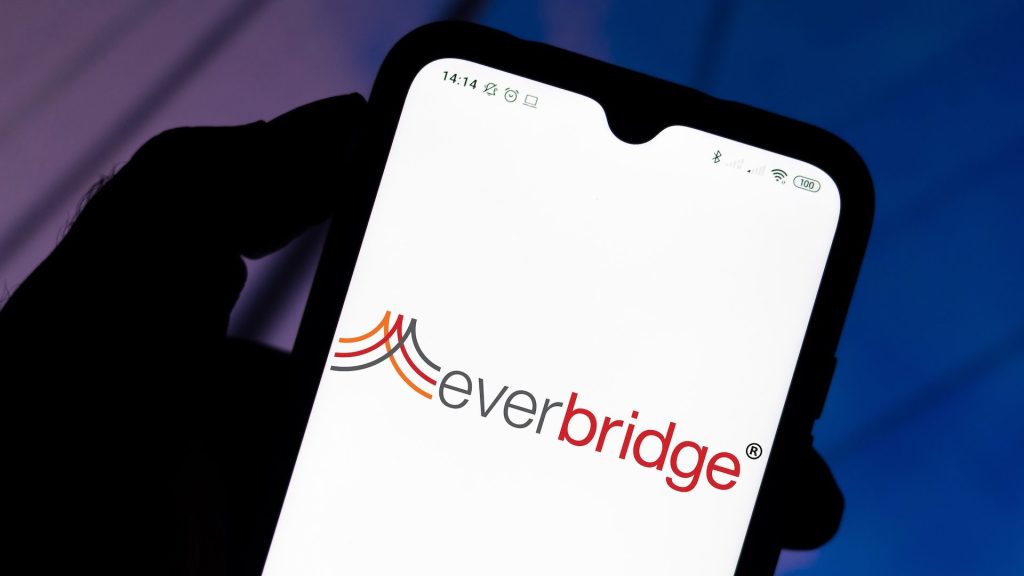
Everbridge, a critical event management (CEM) software company, is going private in a $1.8 billion all-cash deal that will see it taken over by private equity giant Thoma Bravo — 20% more than what was originally announced last month.*
Founded in 2002 initially as 3N Global, Everbridge helps governments and enterprises from across the industrial spectrum respond to emergency situations — this includes risk intelligence to help asses the threat landscape around where employees live or travel, as well as mass-notification tools to effectively communicate critical messaging during severe weather or terrorist attacks.
Everbridge went public on the Nasdaq in 2016, with its shares hitting an all-time high in September 2021 — the company reached a market cap of $6.4 billion, but this dropped by more than two-thirds within four months. Things never recovered, with its valuation hovering at below the $1 billion mark for the past six months.
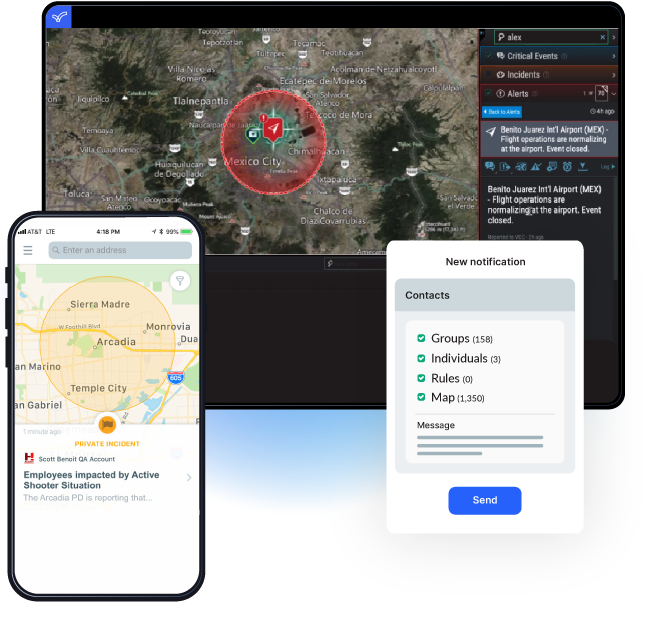
Thoma Bravo, a private equity firm renowned for snapping up underperforming enterprise software firms, is effectively paying a premium in excess of 83%* on Everbridge’s market cap on February 2, the last day of trading before Thoma Bravo tabled a bid. Looking at the volume-weighted average share price (VWAP) over the previous three months, the deal represents a 62% premium, with shareholders netting $35.00 per share — $6.40 more than what was initially announced.*
At a time when geopolitical instability is expected to increase due to the number of elections taking place, alongside existing threats related to climate change and economic headwinds, Thoma Bravo clearly sees Everbridge’s suite of SaaS tools as being integral to companies looking to manage these risks.
“We look forward to working with Everbridge to expand their ability to capitalize on opportunities in an expanding marketplace for risk, compliance, and safety solutions,” Thoma Bravo partner Hudson Smith said in a press release. “The Everbridge product portfolio is already used by some of the world’s most-respected corporations and organizations to comprehensively monitor risk and manage critical events, and we see an extensive runway ahead for product innovation and profitable growth.”
The transaction is still subject to certain regulatory and shareholder approvals, but the company said it expects to close the deal in Q2 2024.
*This article was updated on March 1, 2024, with amended acquisition price and premiums after Everbridge’s “go shop” process yielded greater interest.

Wander the pits at any professional motorsports event, especially something like Formula 1, and you’ll see endless computer displays full of telemetry. Modern teams are awash in real-time digital feedback from the cars. I’ve been in many of these pits over the years and marveled at the streams of data, but never have I seen an instance of the Microsoft Visual Studio software development suite running there right amid the chaos.
But then, I’ve never attended anything like the inaugural Abu Dhabi Autonomous Racing League event this past weekend. The A2RL, as it is known, is not the first autonomous racing series: There’s the Roborace series, which saw autonomous race cars setting fast lap times while dodging virtual obstacles, and the Indy Autonomous Challenge, which most recently ran at the Las Vegas Motor Speedway during CES 2024.
While the Roborace focuses on single-car time trials and the Indy Autonomous series centers on oval action, A2RL set out to break new ground in a couple of areas.
A2RL put four cars on track, competing simultaneously for the first time. And, perhaps more significantly, it pitted the top-performing autonomous car against a human being, former Formula 1 pilot Daniil Kvyat, who drove for various teams between 2014 and 2020.
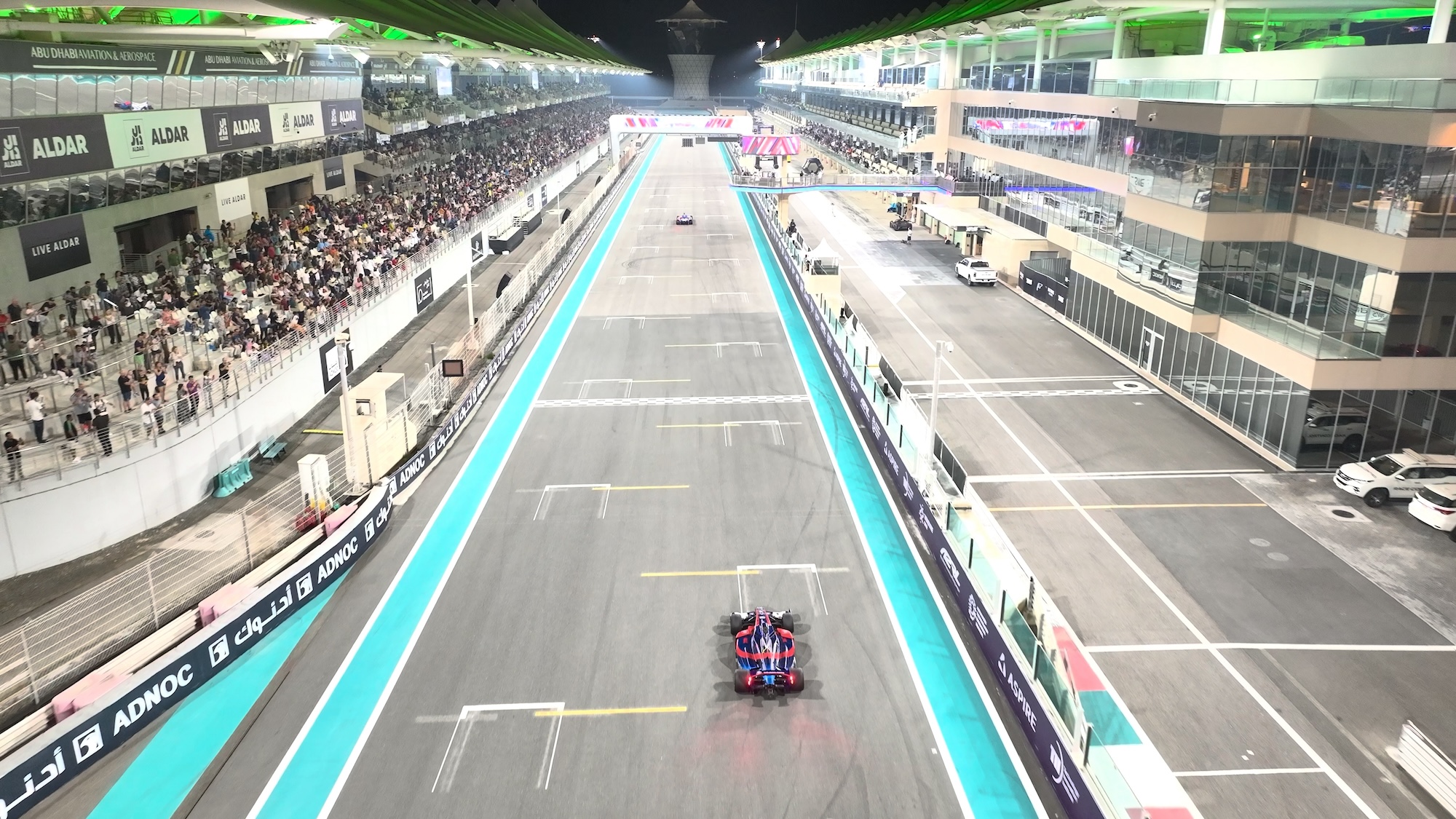
The real challenge was behind the scenes, with teams staffed with an impressively diverse cadre of engineers, ranging from fledgling coders to doctorate students to full-time race engineers, all fighting to find the limit in a very new way.
Unlike Formula 1, where 10 manufacturers design, develop and produce completely bespoke cars (sometimes with the help of AI), the A2RL race cars are entirely standardized to provide a level playing field. The 550-horsepower machines, borrowed from the Japanese Super Formula Championship, are identical, and the teams are not allowed to change a single component.
That includes the sensor array, which features seven cameras, four radar sensors, three lidar sensors and GPS to boot — all of which are used to perceive the world around them. As I would learn while wandering the pits and chatting to the various teams, not everybody is fully tapping into the 15 terabytes of data each car hoovers up every single lap.
Some teams, like the Indianapolis-based Code19, only started work on the monumental project of creating a self-driving car a few months ago. “There’s four rookie teams here,” said Code19 co-founder Oliver Wells. “Everyone else has been competing in competitions just like this, some of them for up to seven years.”
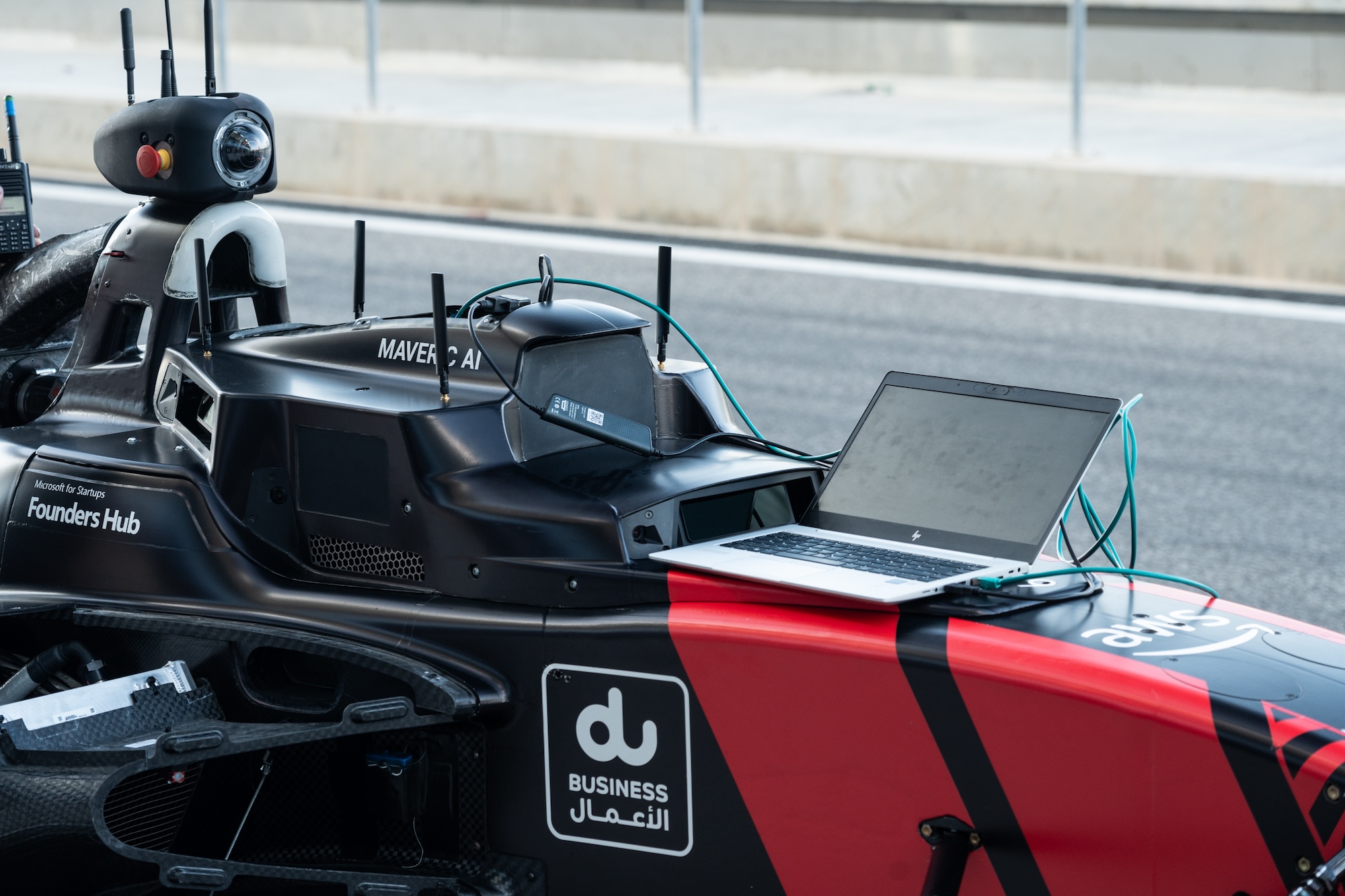
Munich-based TUM and Milan-based Polimove have extensive experience running and winning in both Roborace and the Indy Autonomous Challenge. That experience carries over, as does the source code.
“On the one hand, the code is continuously developed and improved anyway,” said Simon Hoffmann, team principal at TUM. The team made adjustments to change the cornering behavior to suit the sharper turns in the road course and also adjust the overtaking aggression. “But in general, I would say we use the same base software,” he said.
Through the series of numerous qualifying rounds throughout the weekend, the teams with the greatest experience dominated the timing charts. TUM and Polimove were the only two teams to complete lap times in less than two minutes. Code19’s fastest lap, however, was just over three minutes; the other new teams were far slower.
This has created a competition that’s rarely seen in software development. While there have certainly been previous competitive coding challenges, like TopCoder or Google Kick Start, this is a very different sort of thing. Improvements in code mean faster lap times — and fewer crashes.
Kenna Edwards is a Code19 assistant race engineer and a student at Indiana University. She brought some previous app development experience to the table, but had to learn C++ to write the team’s antilock braking system. “It saved us at least a couple of times from crashing,” she said.
Unlike traditional coding problems that might require debuggers or other tools to monitor, improved algorithms here have tangible results. “A cool thing has been seeing the flat spots on the tire improve over the next session. Either they’ve reduced in size or in frequency,” Edwards said.
This implementation of theory not only makes for engaging engineering challenges but also opens up viable career paths. After earlier interning with Chip Ganassi Racing and General Motors, and thanks to her experience with Code19, Edwards starts full-time at GM Motorsports this summer.
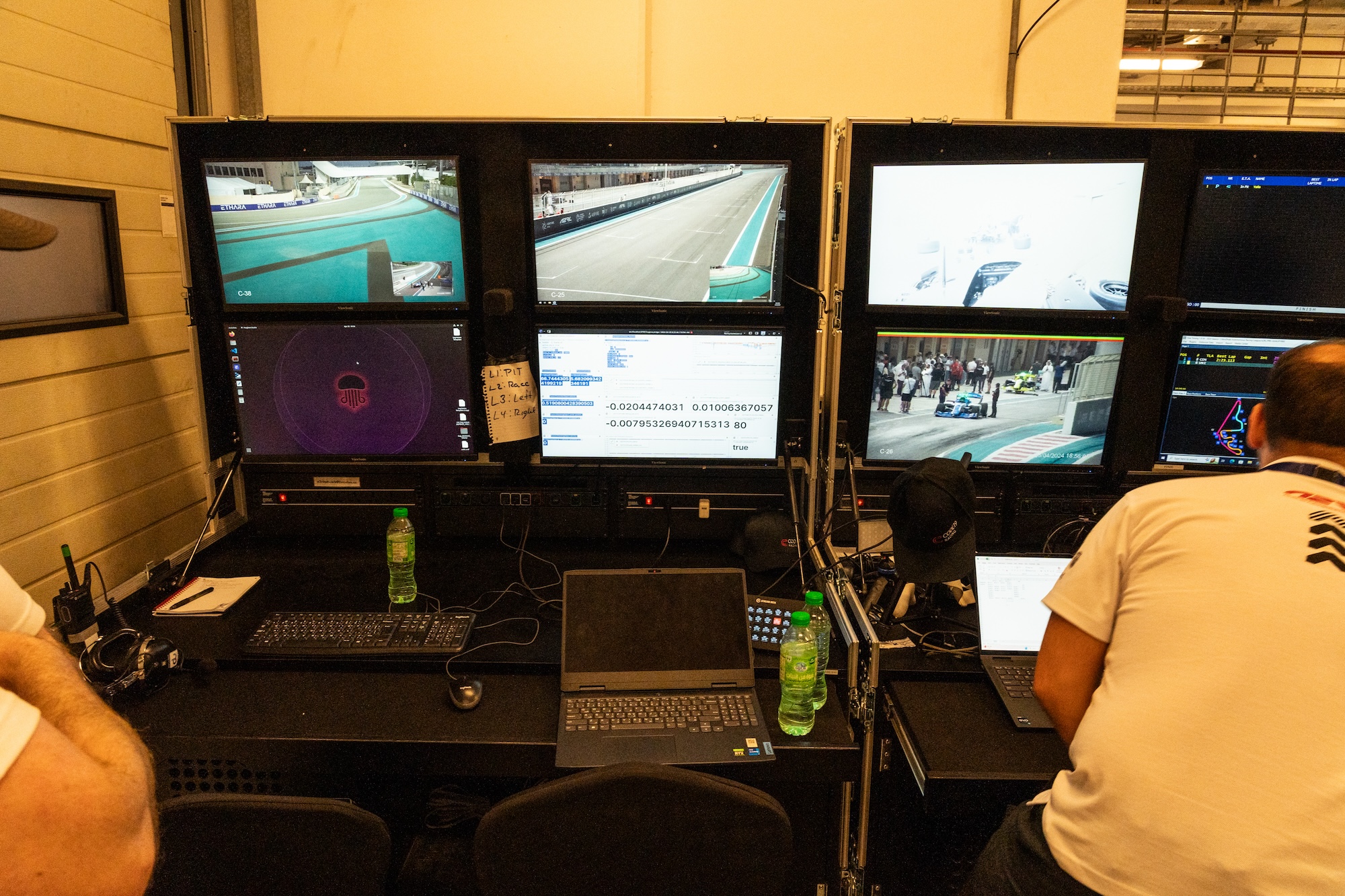
That sort of development is a huge part of what A2RL is about. Shadowing the main on-track action is a secondary series of competitions for younger students and youth groups around the world. Before the main A2RL event, those groups competed with autonomous 1:8-scale model cars.
“The aim is, next year, we keep for the schools the smaller model cars, we’ll keep for the universities maybe doing it on go-karts, a bit bigger, they can play with the autonomous go-karts. And then, if you want to be in the big league, you start racing on these cars,” said Faisal Al Bannai, the secretary general of Abu Dhabi’s Advanced Technology Research Council, the ATRC. “I think by them seeing that path, I think you’ll encourage more guys to come into research, to come into science.”
It’s Al Bannai’s ATRC that’s footing the bill for the A2RL, covering everything from the cars to the hotels for the numerous teams, some of whom have been testing in Abu Dhabi for months. They also put on a world-class party for the main event, complete with concerts, drone races, and a ridiculous fireworks show.
The on-track action was a little less spectacular. The first attempt at a four-car autonomous race was aborted after one car spun, blocking the following cars. The second race, however, was far more exciting, featuring a pass for the lead when the University of Modena’s Unimore team car went wide. It was TUM that made the pass and won the race, taking home the lion’s share of the $2.25 million prize purse.
As for man vs. machine, Daniil Kvyat made quick work of the autonomous car, passing it not once but twice to huge cheers from the assembled crowd of more than 10,000 spectators who took advantage of free tickets to come see a little bit of history — plus around 600,000 more streaming the event.
The technical glitches were unfortunate. Still it was a remarkable event to witness and illustrated how far autonomy has come — and of course, how much more progress needs to be made. The fastest car was still upward of 10 seconds off of Kvyat’s time. However, it ran smooth, clean laps at an impressive speed. That’s in stark contrast to the first DARPA Grand Challenge in 2004, which saw every single competitor either crashing into a barrier or meandering off into the desert on an unplanned sojourn.
For A2RL, the real test will be whether it can evolve into a financially viable series. Advertising drives most motorsports, but here, there’s the added benefit of developing algorithms and technologies that manufacturers could reasonably apply in their cars.
ATRC’s Al Bannai told me that while the series organizers own the cars, the teams own the code and are free to license it: “What they compete on at the moment is the algorithm, the AI algorithm that makes this car do what it does. That belongs to each of the teams. It doesn’t belong to us.”
The real race, then, might not be on the track, but in securing partnerships with manufacturers. After all, what better way to inspire confidence in your autonomous technology than by showing it can handle traffic on the race track at 160 mph?
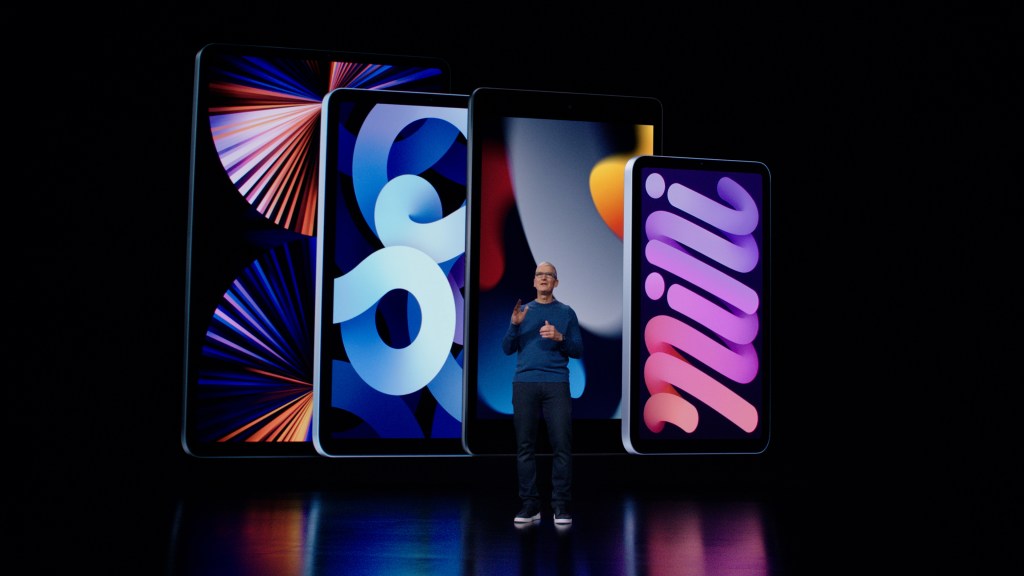
We’re still well over a month out from WWDC, but Apple went ahead and snuck in another event. On Tuesday, May 7 at 7 a.m. PT/10 a.m. ET, the company is set to unveil the latest additions to the iPad line. According to the rumor mill, that list includes: a new iPad Pro, iPad Air, Apple Pencil and a keyboard case.
More surprisingly, the event may also see the launch of the new M4 chip, a little over six months after the company unveiled three new M3 chips in one fell swoop. Why the quick silicon refresh? Well, for starters, word on the street is that Apple launched the M3 later than expected (likely owing to supply chain issues), forcing the company to launch all three chips at the same event.
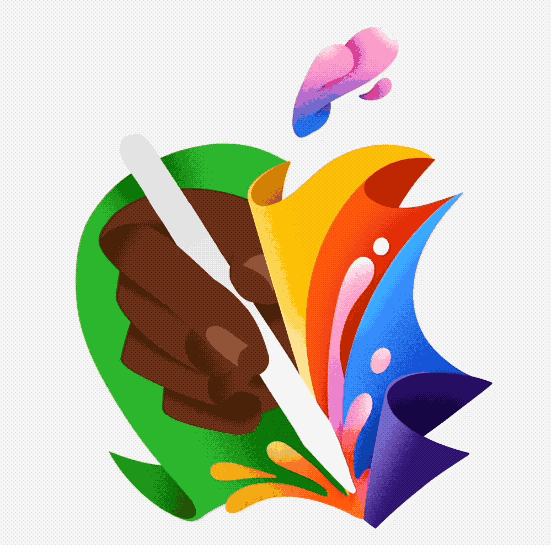
Couple that with the fact that Microsoft is rumored to be launching its own third-party silicon at Build at the end of May, and you start to understand why the company opted not to wait. An announcement may be even more pressing, given that the Microsoft/ARM chips are said to offer “industry-leading performance” — an apparent shot across Apple’s bow. Could a new chip also mean new Macs? That would be a short refresh cycle for the current crop, but it’s certainly not out of the realm of possibility.
What does seem certain, however, is a new iPad Pro with an OLED display, a 12.9-inch iPad Air and new gestures for the Apple Pencil. Also, expect plenty of AI chatter. It’s 2024, after all. You can watch along live at the link below, and stay tuned to TechCrunch for news as it breaks.
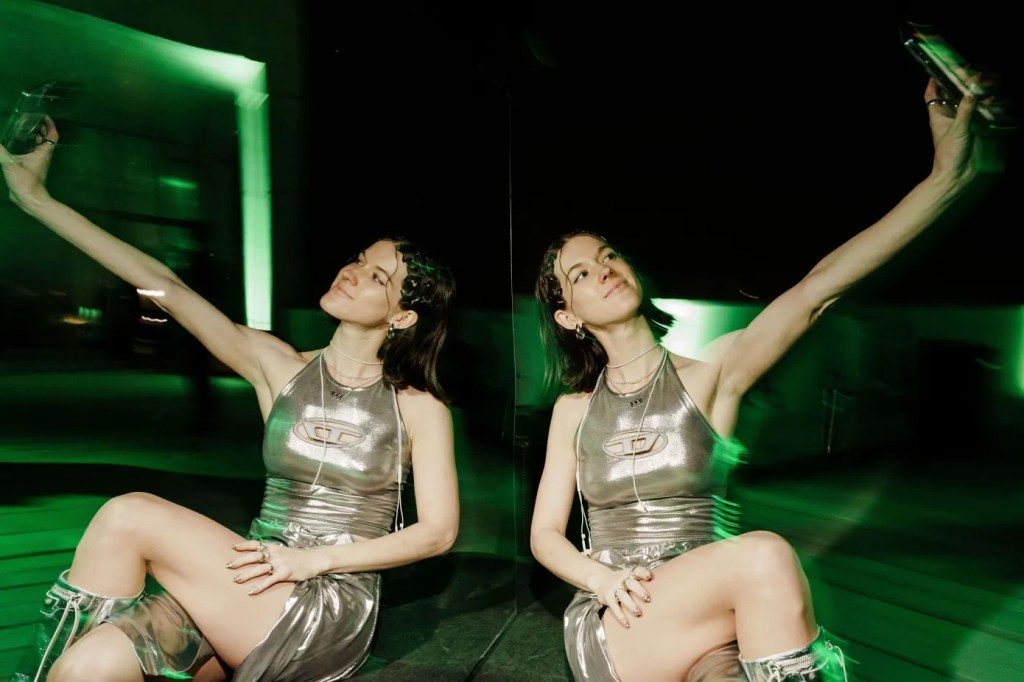
The warehouse was dim and slightly misty. But the bar was open, and a photographer was snapping away anyway.
On Friday, the crowd followed the white rabbit to Brooklyn for The Net Gala, a chic tech answer to The Met Gala. The theme of the event was internet surveillance, prompting attendees to clad in black, with some dazzling in Schiaparelli. Think “Matrix meets Mugler,” a commentary on growing up in the age of the internet, a celebration of culture through art, fashion, music and, of course, technology.
Guests took photos on black steps before making their way upstairs, which is where the show’s theme really emerged: A camcorder hooked to a vintage television replayed the event in real time. A confessional booth with a handheld digital voice recorder let attendees spill secrets while a piece of generative artwork mirrored the movements of guests passing by. Rico Nasty erupted through the speakers outside while the artist Heno, releasing new music, blasted through the VR headsets that took one into the metaverse.
The Net Gala was thrown by the social collective Boys Club, a new media company best known for its podcast, newsletter, events and magazine. It bills itself as for the “chronically online and tech curious.” Deana Burke and Natasha Hoskins co-founded Boys Club in 2021 to bring women together to discuss emerging technologies and their effects.
The first Boys Club event took place in a loft in Chinatown, bringing together 60 people. More than 500 people attended The Net Gala, flooding the dance floor and taking stickers passed around that said, “I’m tired of being hyper-surveilled.” For this event, Boys Club partnered with blockchain Lusko, a longtime collaborator who builds tools to help artists manage their creative projects.

Speaking to TechCrunch, Boys Club said it decided to have a surveillance-themed gala to create commentary around it as a pressing matter in today’s society while also fundraising for the Lower Eastside Girls Club. Boys Club ultimately helped raise $5,000 for the club, which aims to help young women learn about topics such as STEM and Civic Engagement.
Though Boys Club took an opportunity to have fun with the issue of surveillance, the issue is indeed a serious one. From government surveillance to cybersecurity and hacking, society’s increased digitization has created problems that innovators are still rushing to fix. Just in the past week, TechCrunch has reported on security bugs in phone tracking apps, the massive UnitedHealth attack and the use of hacking in war.
Boys Club said that the “general aesthetics around surveillance are interesting, and it felt ripe to have some fun bringing this theme to life.” It also stressed the importance of awareness.
“As we design a new internet, the over collection, commodification, and weaponization of personal data is something that we hope gets left behind in Web2,” Boys Club said. Its co-founder Burke doubled down on that point.

“As we live more and more of our lives online, we think it’s important to be much more acutely aware of how technology interacts with your day-to-day and what privacy tradeoffs you’re often making for the sake of convenience,” Burke told TechCrunch. “Awareness is the priority.”
The Boys Club picked artists who could help bring the creative internet to life, it said, which meant teaming up with Heno for an interactive digital art installation, having a vending machine that gave out digital collectibles and finding co-chairs that supported the mission. Bayli, an artist, co-chaired the event and praised The Net Gala for “championing women-run tech and crypto companies.”
“Where else can you fund such a cool mask-up of art, fashion and tech, all wrapped up in one fabulous event,” Bayli told TechCrunch. “Seriously, so many gorgeous brains in one place.”
Attendees also raved about the party. Jeheli Odidi, a creative director, loved the way the party brought together different sides of New York. Odidi highlighted that there were “tech girlies,” alongside “art boys and music people,” and everyone seemed easy and approachable. Musician T.S. Rose told TechCrunch it was vital to have events like this to “get all kinds of people together to get our creative wheels turning.”
“Coders, musicians, designers, seeing how we can incorporate each other’s talents and all these new techs to our projects. These rooms spark magic in the making,” Rose said.
The Boys Club said The Net Gala will become an annual event and return next year. This gives The First Friday in May a chic new meaning.

So far, the biggest surprise about May 7’s “Let Loose” event is that it’s happening at all. We’re just over a month out from Apple’s annual Worldwide Developer Conference, and yet the company determined there was enough news to warrant a stand-alone event. iPads (including the iPad Pro and iPad Air) will be the focus, while the long-neglected Apple Pencil is finally getting some love. It was, after all, the focal point of the event’s invite.
Rumors have also begun swirling around a potential M4 announcement. If true, it would represent a key change to Apple’s silicon release cadence, though that hasn’t exactly been consistent over the year. The likeliest reason for the change is Microsoft’s expected release of first-party, ARM-based silicon at its Build conference at the end of the month. Speculation has it that Microsoft’s AI-focused silicon will smoke Apple’s M3 chips.
Apple iPad event 2024: Watch Apple unveil new iPads right here
It’s only been roughly seven months since Apple announced a trio of M3 chips. That’s a quick turnaround for a replacement chip, but keep in mind, the company is believed to have been working toward a more staggered release schedule last year, only to have those plans gunked up by some ongoing supply chain issues. Perhaps this schedule readjustment could see additional M4 SKUs announced during WWDC in a month.
In the meantime, it’s possible that, for the first time, the latest chip could appear on an iPad first — specifically the iPad Pro. At the very least, the high-end iPad is due for a refresh. The latest model, which sports the M2 chip, was released toward the end of 2022. Apple has spent the past several years blurring the line between the iPad and Mac, so why not let the tablet get its hands on new silicon first for a change?
The other big change to the Pro is said to be the long-awaited upgrade to an OLED display. Bloomberg suggests that this can’t come soon enough, as the tablet category is “in a deep funk right now.” Certainly the days of the iPad, one of Apple’s superstar devices, seem mostly behind us.
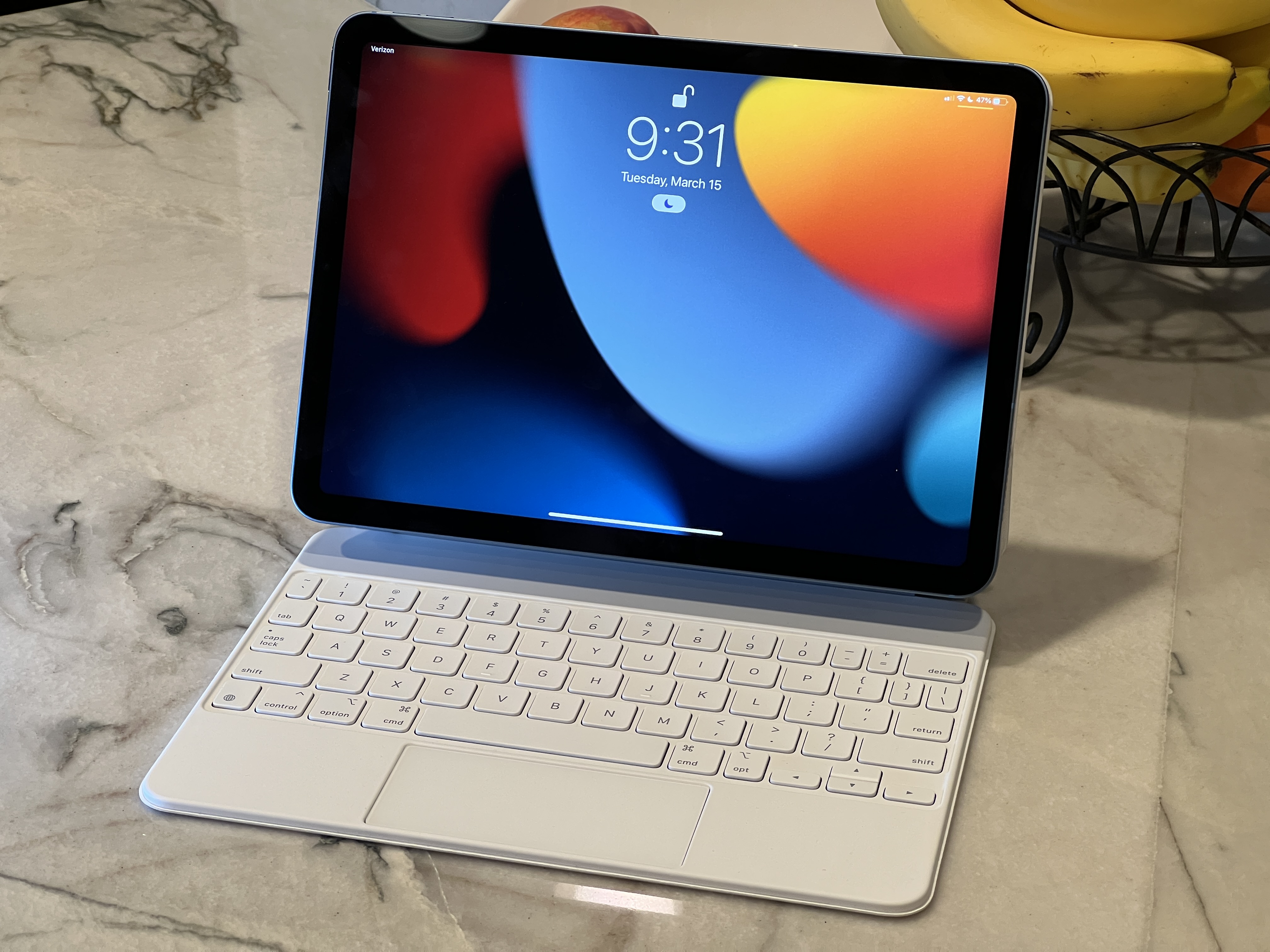
The company continues to dominate the category, but the tablet had a rough 2023, giving Apple a big slice of an increasingly shrinking pie. Canalys says the overall market decreased by 10% last year. Given the Vision Pro’s slow start, Apple could really use a shot in the arm right now — though a redesigned iPad doesn’t really fit the bill.
A pair of new iPad Airs is said to be arriving in 11- and 12.9-inch versions. The current rumor still has the more accessible models receiving an M2 chip — if the M4 does arrive next week, however, perhaps they’ll get an additional bump as well.
For what remains a relatively niche device, the Apple Pencil is apparently ready for its close-up. The stylus is said to be getting a new squeeze detection feature (which was alluded to earlier in an iPad) update. Haptic feedback could be on the docket as well, along with interchangeable magnet tips. Find My support could arrive too — a welcome addition for an eternally misplaced peripheral. Talking of blurring the lines between the iPad and Mac, Apple’s latest Magic Keyboard makes the tablet look even more like a laptop than before.

As for Macs themselves, with the arrival of the M4, I wouldn’t be wholly surprised to see the company sneak a computer refresh or two in. It seems just as — or even more — likely that Apple is saving major additions to the Mac line for WWDC in June.
The event is an early one for you West Coasters. It kicks off at 7 a.m. PT/10 a.m. ET. You can watch it live here and follow TechCrunch for the news as it breaks.